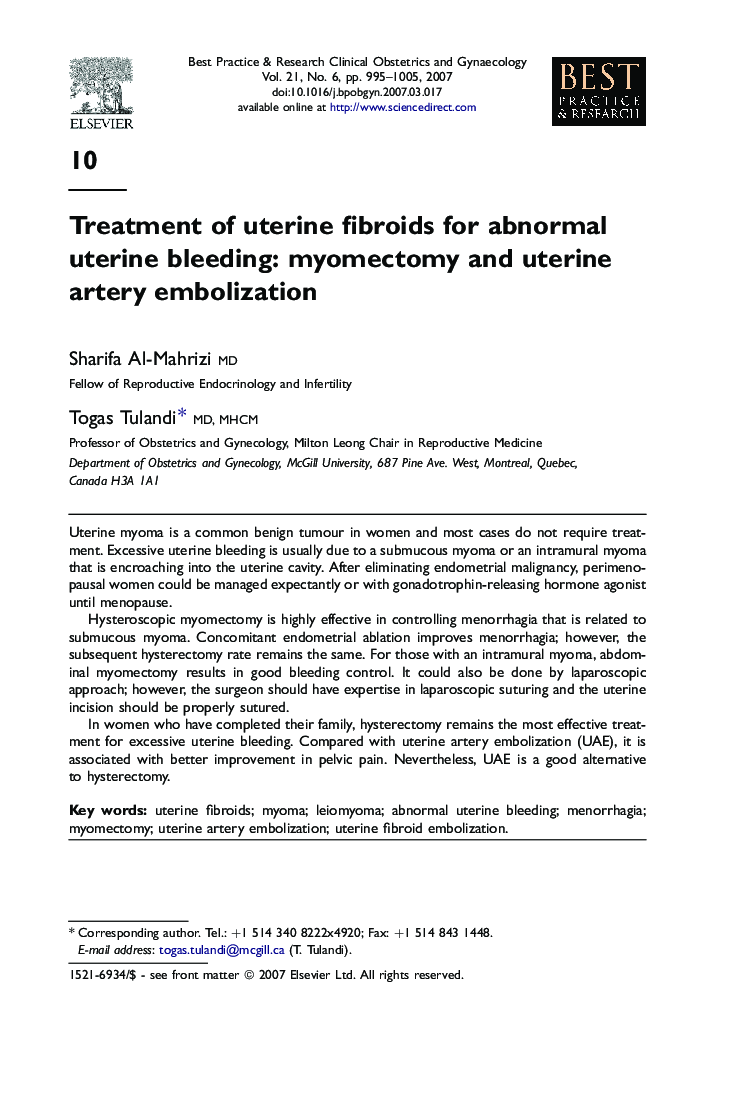| Article ID | Journal | Published Year | Pages | File Type |
|---|---|---|---|---|
| 3907773 | Best Practice & Research Clinical Obstetrics & Gynaecology | 2007 | 11 Pages |
Uterine myoma is a common benign tumour in women and most cases do not require treatment. Excessive uterine bleeding is usually due to a submucous myoma or an intramural myoma that is encroaching into the uterine cavity. After eliminating endometrial malignancy, perimenopausal women could be managed expectantly or with gonadotrophin-releasing hormone agonist until menopause.Hysteroscopic myomectomy is highly effective in controlling menorrhagia that is related to submucous myoma. Concomitant endometrial ablation improves menorrhagia; however, the subsequent hysterectomy rate remains the same. For those with an intramural myoma, abdominal myomectomy results in good bleeding control. It could also be done by laparoscopic approach; however, the surgeon should have expertise in laparoscopic suturing and the uterine incision should be properly sutured.In women who have completed their family, hysterectomy remains the most effective treatment for excessive uterine bleeding. Compared with uterine artery embolization (UAE), it is associated with better improvement in pelvic pain. Nevertheless, UAE is a good alternative to hysterectomy.
